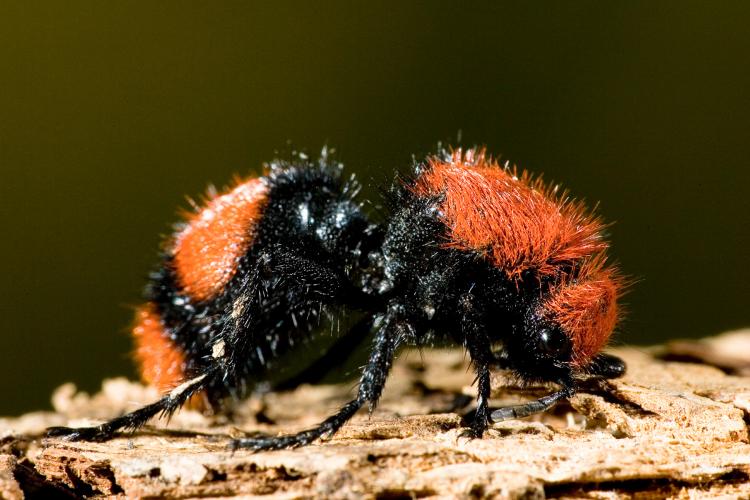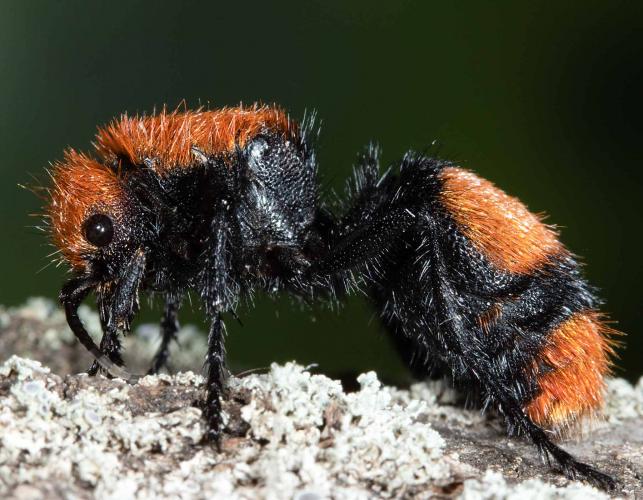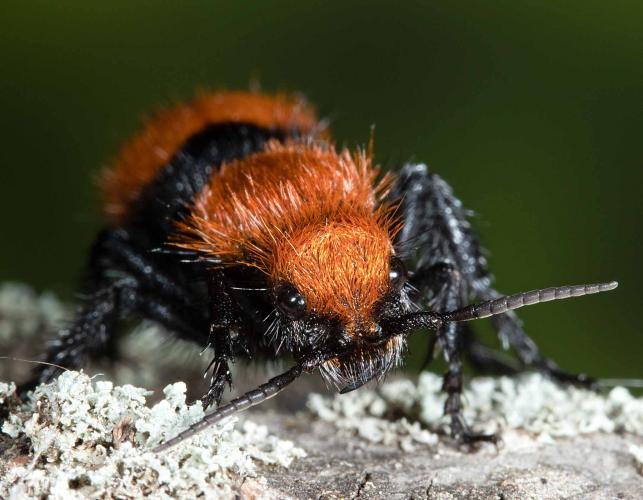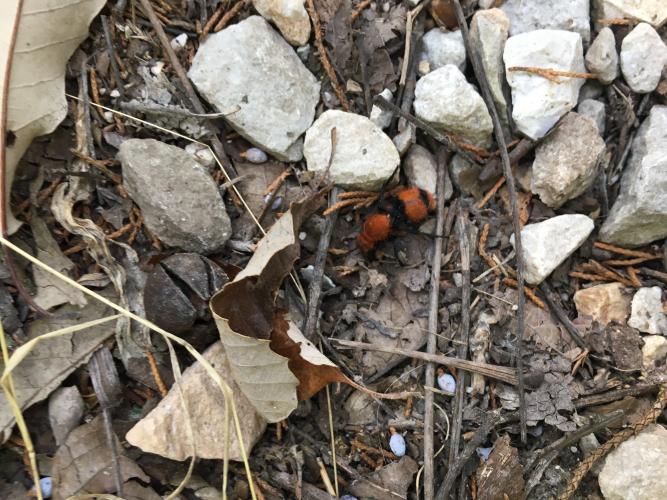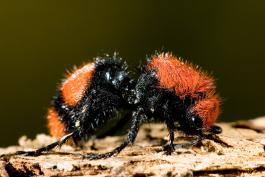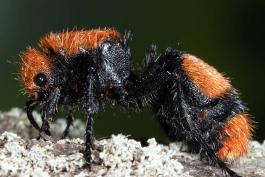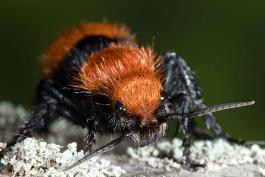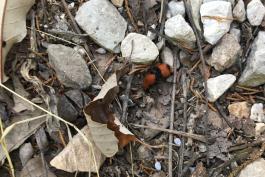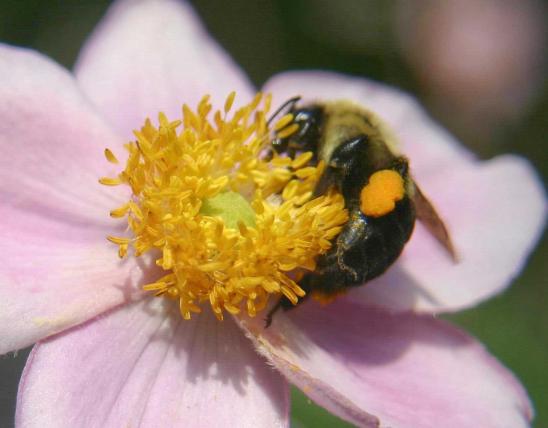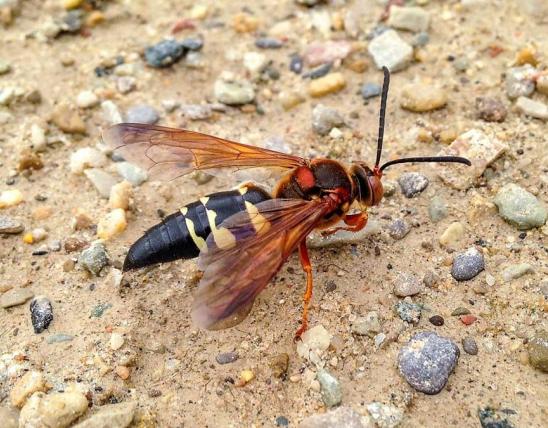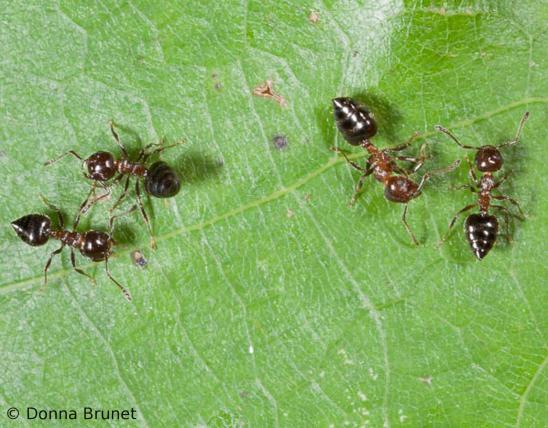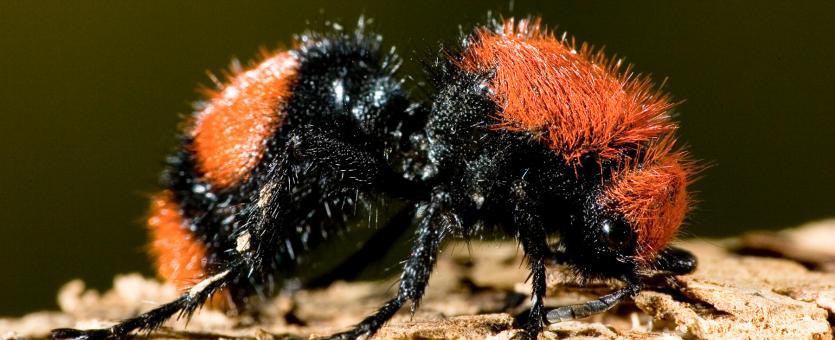
Velvet ants are not true ants. True ants are social insects, while velvet ants are a group of solitary wasps. Female velvet ants are wingless throughout their lives; males are winged. There are many species and several genera of velvet ants in Missouri; they look like large, furry ants and are usually brightly colored, often in shades of red and orange, with blackish legs. Males look more like “normal” wasps. Velvet ants usually run on the ground quite rapidly.
Don’t try to handle them: Velvet ants are not aggressive, but they will sting if held or if stepped on with bare feet. The stinger is extraordinarily long, and the sting is excruciating, hence the popular name “cow killer.” A 1996 study showed that, oddly enough, their venom is comparatively less toxic than that of, say harvester ants and honeybees.
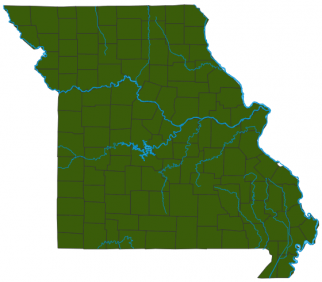
Habitat and Conservation
Velvet ants occur in places where their host species dig their nests. They are most often found in open, dry, sunny, sandy areas such as sunny lawns or cemeteries.
Females of several species can produce chirping or squeaking sounds by scraping one abdominal segment against another. Sometimes they make this sound as a warning prior to deploying their sting.
Food
Life Cycle
Young develop as parasites of other immature insects, most often the larvae of other wasps and bees. Velvet ants that attack bees and wasps place their eggs in the cells of the host. The female velvet ant often enters these nests forcibly, and the velvet ant may remain in the nest for several days.
The eastern velvet ant, Dasymutilla occidentalis, the largest and most brightly colored species of velvet ant in the state, parasitizes bumble bee nests. Other velvet ant species parasitize, for example, cicada killer wasps.
Human Connections
Look, but don’t touch. The naturalist Edwin Way Teale described his boyhood encounter with a velvet ant: “I was holding it, trying to decide what it was, when it went into action. The effect of its sting was like a series of powerful electric shocks following each other in quick succession.” Ouch!
Velvet ants are not pests; instead, they represent another piece of nature's endlessly fascinating tapestry.
Ecosystem Connections
